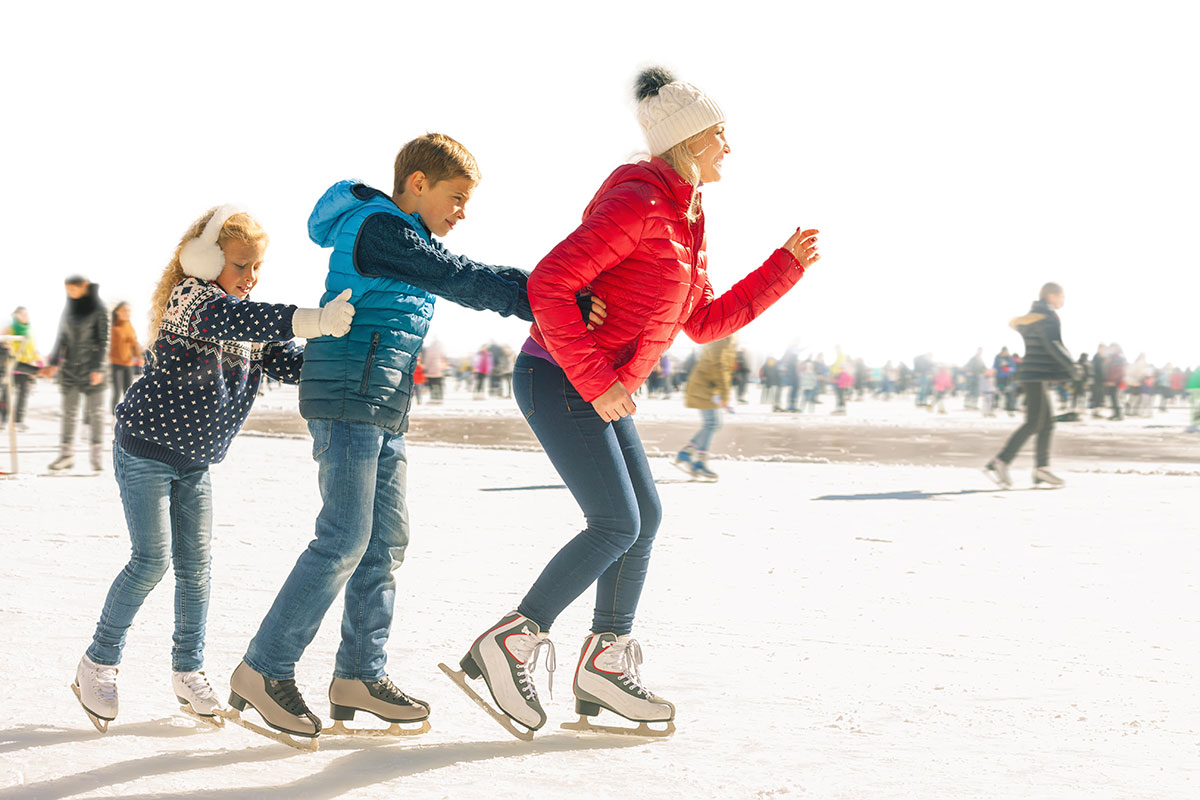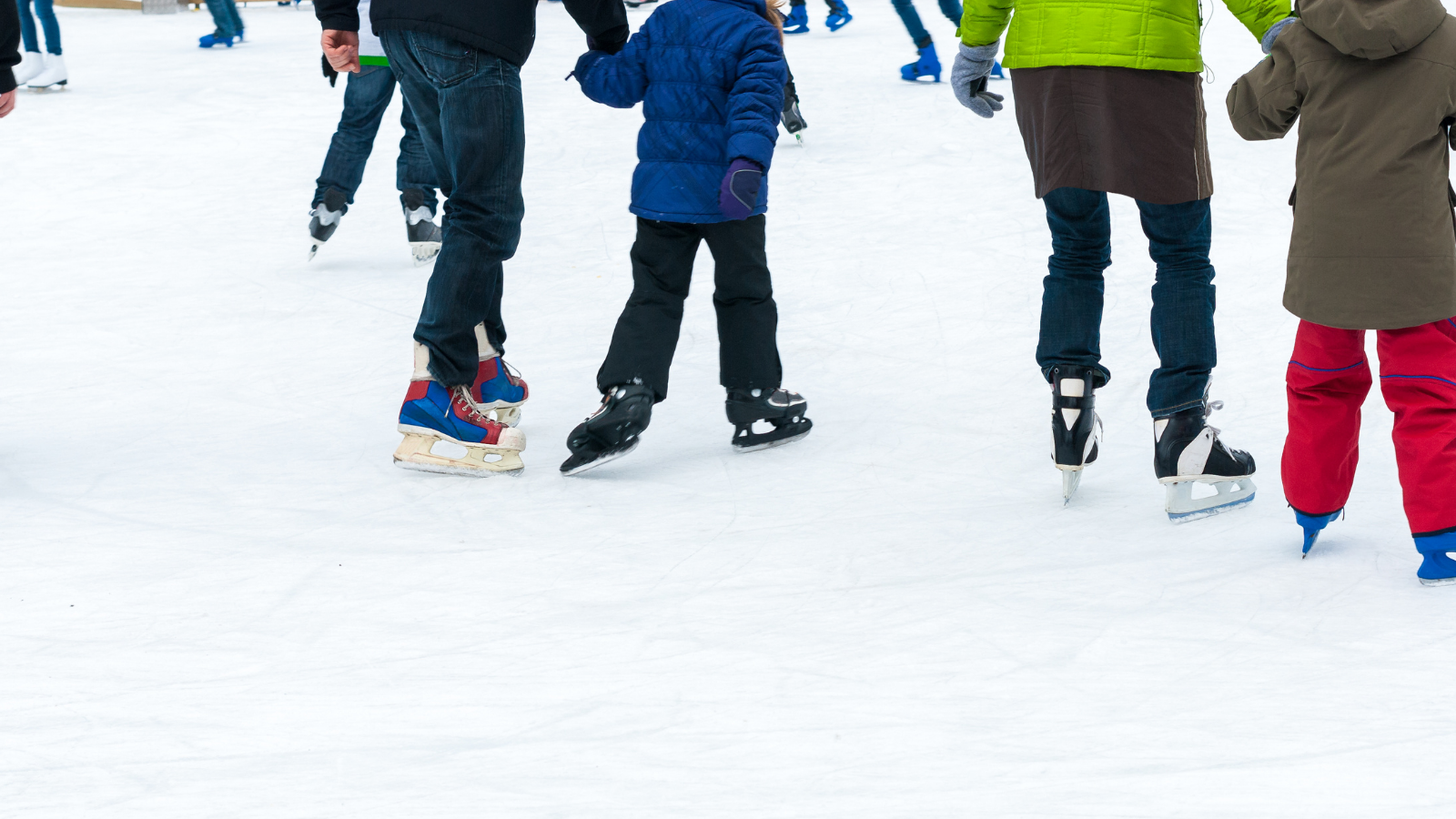Ice skating is a fantastic activity that families can enjoy together, offering an opportunity to bond, get some exercise, and have fun. However, just like any physical activity, ice skating comes with its risks. Whether you’re a beginner or a seasoned skater, safety should always be your top priority. In this article, we’ll provide practical tips and advice on how families can stay safe while ice skating and ensure everyone enjoys the rink without injury.
Why Ice Skating Safety Is Crucial for Families
While ice skating can be a blast, it’s important to remember that it also comes with potential hazards. The hard, slippery surface of the rink can lead to falls, collisions, and accidents. For families with children, ensuring safety becomes even more important. Kids may be less experienced, prone to losing their balance, and more vulnerable to injury. But don’t worry—by taking a few precautions, you can ensure a safe and fun skating experience for everyone in your family.
Key Reasons for Safety Precautions:
- Avoiding Injuries: Falls are a part of learning to skate, but taking the right precautions can help prevent sprains, fractures, and more serious injuries.
- Building Confidence: When families know they are prepared and safe, they’re more likely to enjoy their time on the ice and improve their skills without worrying about accidents.
- Creating Positive Memories: A safe and enjoyable experience will leave everyone with positive memories, encouraging your family to return to the rink time and time again.
1. Wear Proper Protective Gear
The first step in ensuring safety on the ice is wearing the right protective gear. While helmets, pads, and other equipment are standard in sports like hockey, they’re not always worn by recreational skaters. However, even if your family members are just skating for fun, safety gear can make a big difference.
Protective Gear to Consider:
- Helmets: While not always required for recreational skaters, helmets are an essential protective item, especially for beginners or young children. Helmets can protect against head injuries in the event of a fall.
- Wrist Guards: Wrist injuries are common when skaters use their hands to break their fall. Wrist guards can prevent sprains and fractures.
- Knee and Elbow Pads: Knee and elbow pads help protect against abrasions and bruises from falls. For children and beginner skaters, pads offer an extra layer of protection.
- Mouth Guards: For those participating in more active or advanced skating, mouth guards help prevent dental injuries, especially in sports like hockey or figure skating.
- Appropriate Clothing: Wear warm, comfortable clothing that doesn’t restrict movement. Layers are ideal, as they can be added or removed depending on the weather.

2. Choose the Right Ice Skates
Wearing the right ice skates can prevent injuries and improve your family’s skating experience. Ill-fitting skates can lead to blisters, discomfort, and difficulty in skating. Here’s how to choose the best skates for everyone:
Tips for Selecting Ice Skates:
- Proper Fit: Ensure that the skates fit snugly but comfortably. Skates that are too tight will cause discomfort, while skates that are too loose can increase the risk of falling.
- Support: Look for skates with ankle support, particularly for beginners. High-top skates are often better for new skaters as they provide more stability.
- Quality: Invest in a good-quality pair of skates. Renting skates from a rink is fine for occasional skaters, but if you plan to skate regularly, owning a pair that fits well will make skating easier and more enjoyable.
- Lace Your Skates Properly: Always lace your skates securely. Loose laces can cause instability and make it easier to trip.
3. Teach Your Kids Basic Skating Techniques
If you have young skaters in the family, teaching them the basics of ice skating will not only improve their confidence but also keep them safer on the rink. Skaters who are more familiar with proper technique are less likely to fall or become injured.
Basic Skating Skills for Kids:
- Bend Your Knees: Encourage your children to keep their knees slightly bent while skating. This lowers their center of gravity and makes it easier to maintain balance.
- Glide, Don’t Stomp: Teach kids to glide on the ice rather than stomping their feet. Gliding gives more control and reduces the chances of tripping.
- How to Fall Safely: Falling is inevitable when learning to skate. Teach your kids how to fall safely by bending their knees and falling to the side, not forward, to avoid injuring their wrists or face.
- Practice Stopping: Learning how to stop is one of the most important skating skills. Practice a simple “snowplow stop,” where the skater pushes outwards with their feet to slow down and stop.
4. Know Your Limits and Take Breaks
For beginners, especially children, it’s important to recognize their limits and take frequent breaks. Ice skating can be tiring, especially for those who are not used to balancing on skates. Overexertion can lead to fatigue, which increases the risk of falls and injuries.
Tips for Staying Comfortable and Safe:
- Pace Yourself: Encourage your family to skate at their own pace. There’s no rush to master skating in one session. Take it slow, especially for younger children and beginners.
- Take Breaks: Take short breaks on the rink or in a designated area to rest. This will help prevent fatigue and allow your family to keep their energy up throughout the session.
- Hydrate: Skating can be physically demanding, so make sure everyone stays hydrated. Bring water bottles or take a break to drink.

5. Stick to the Rules of the Rink
Every ice rink has its own set of rules designed to keep everyone safe. Familiarize yourself with these rules before you begin skating. Make sure everyone in your family knows and understands these rules, especially if they are new to skating.
Common Ice Skating Rules:
- Skate in the Right Direction: Many rinks have a designated direction for skating. Always follow this to avoid collisions.
- No Horseplay: Roughhousing or racing on the ice can be dangerous, especially for children. Encourage good behavior on the rink and make sure everyone is skating safely.
- Yield to Other Skaters: More experienced skaters and speed skaters may be on the rink. Teach your family to be aware of their surroundings and yield to others when necessary.
- Respect the Boundaries: Stay within the rink’s boundaries and don’t skate near the edges unless you’re stopping. If your family members are still learning, make sure they stay within safer areas.
6. Monitor Ice Conditions
Check the condition of the ice before starting to skate, especially if you’re at an outdoor rink. Poor ice conditions—such as cracks, rough patches, or puddles—can increase the risk of falls. Many indoor rinks regularly resurface the ice, but outdoor rinks may require more attention to ensure the surface is safe.
How to Spot Unsafe Ice:
- Cracks and Holes: Avoid skating on ice that has visible cracks or holes, as they can cause skates to catch, leading to falls.
- Wet or Slippery Areas: If the ice is wet or particularly slippery in some sections, steer clear of those areas to reduce the risk of slipping.

7. Supervise Young Children at All Times
If your children are skating for the first time, always supervise them closely. Even if they’re confident skaters, younger children may still need assistance, especially when they fall or feel unsure about their balance.
Supervision Tips:
- Stay Close: Be within arm’s reach of your child, especially if they’re just learning to skate. A fall can happen quickly, and having a parent or guardian nearby can help prevent injury.
- Assist with Balance: Hold their hand or use a skating aid if necessary to help them maintain their balance while they gain confidence.
- Encourage, Don’t Push: Avoid pushing kids to skate faster or try moves they’re not ready for. Let them learn at their own pace and celebrate their progress.
Conclusion
Ice skating is a wonderful way for families to have fun together, but safety should always come first. By wearing the proper gear, teaching basic skills, knowing your limits, and staying aware of the ice conditions and rink rules, you can ensure that everyone has a safe and enjoyable experience on the ice. Whether you’re skating with young children or just enjoying a family outing, these simple precautions will help minimize risks and maximize the fun!

